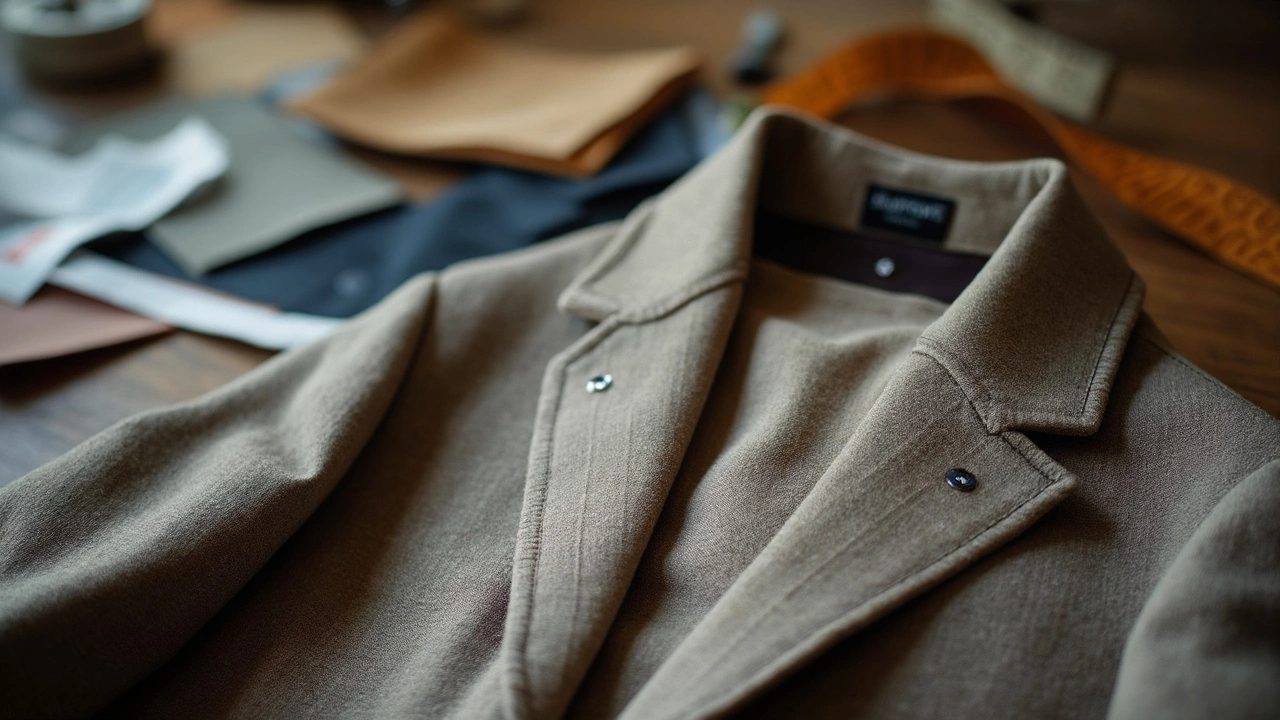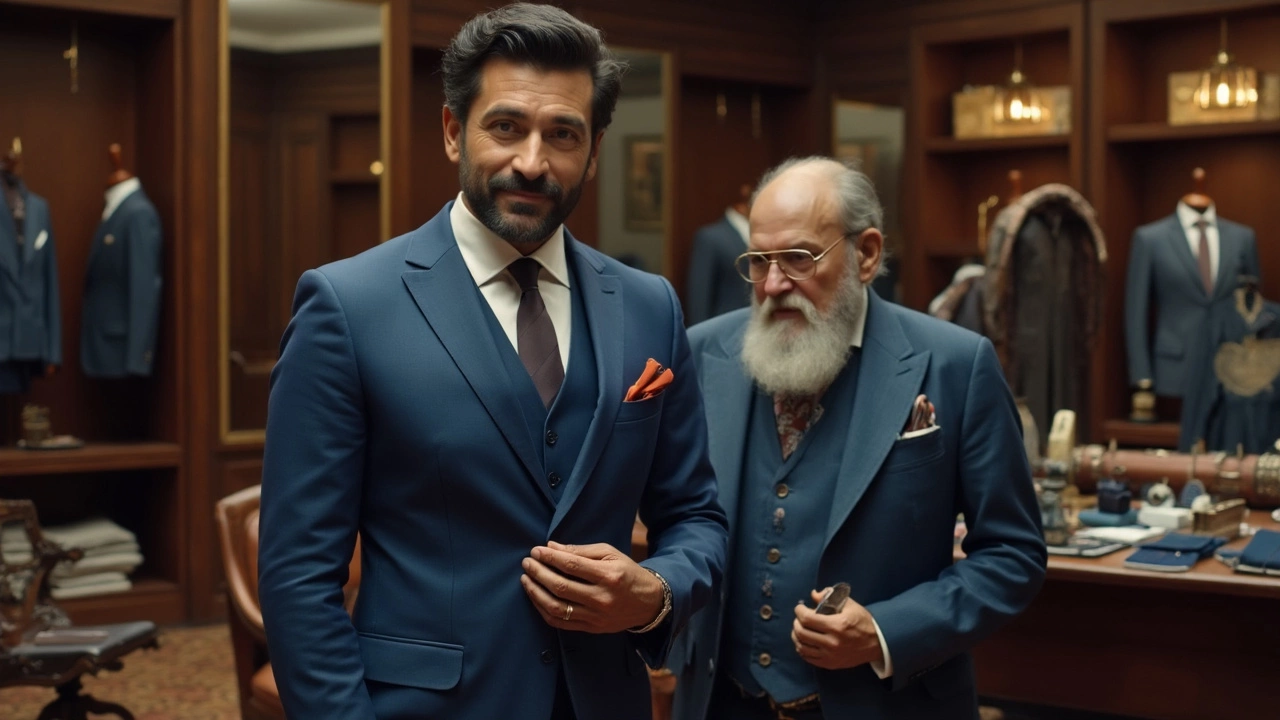Walk into any upscale clothing shop, and you’ll spot suits that cost more than your rent. But do they really look that much better than the ones from a department store? It’s easy to get lost in the hype, but there’s a lot going on beneath the surface.
If you’ve ever tried on a suit that just didn’t sit right, you know how much the details matter. Sometimes, fit can make a $200 suit look like $2,000—and a bad fit can make high-end fabric look drab. This isn’t just about price tags; it’s about what you actually get for your cash, like fabrics, stitching, and (most importantly) how the suit hugs your body.
Then there’s the little stuff: real horn buttons, hand-stitched details, a silk lining that feels like butter. These touches don’t just feel nice, they often stick out in photos or under good lighting. But some features—like a brand label on the inside or those wild designer price tags—aren’t visible at all.
If you’re trying to decide if an upscale suit is worth it or looking for ways to make an off-the-rack option look incredible, understanding these differences is your superpower. You don’t have to go broke to look sharp, and knowing what counts helps you spend smarter.
- What Makes a Suit Expensive?
- Does Price Equal Better Looks?
- Details That Actually Matter
- When Cheap Wins: Smart Budget Suiting
- Tips for Getting the Best Bang for Your Buck
What Makes a Suit Expensive?
The price of a suit doesn’t just pop out of nowhere. It mostly comes down to what it's made of, how it's put together, and who’s putting their name on it. Let’s break down why some suits eat up your paycheck, while others are more affordable.
First, fabric is king. Expensive suits use finer materials, like 100% wool from Italy, cashmere blends, or super-soft mohair. Brands often boast names like Loro Piana or Vitale Barberis Canonico—these mills are basically the gold standard. On the other hand, cheaper suits might use polyester or lower-grade wool, which just doesn’t breathe or drape as well.
- Suit quality starts with the wool’s "super" number—the higher the number (think Super 120s or above), the softer and lighter the feel, but also the bigger the price tag.
- Higher-end suits almost always have real horn or mother-of-pearl buttons, while budget suits stick to plastic.
- Expensive linings use pure silk or cupro (a silky, breathable fabric), while lower-end ones usually go with polyester.
Construction comes next. Top-shelf suits are often fully canvassed. That means they have a special inner layer sewn in between the outer fabric and lining—a canvas made of horsehair or cotton—which helps the suit mold to your body over time. Most cheaper suits are fused—basically glued together—so they never fit quite as well and wear out faster.
Labor costs matter too. Those hand-stitched buttonholes and pick stitching along the lapels? Not just for show. Handwork can take hours and needs a skilled tailor, which drives up the cost. Mass-produced suits skip these steps.
Don’t forget the brand factor. Slapping on a luxury label usually means you’re paying partly for the name. A Gucci or Tom Ford suit can run $3,000 to $5,000—even if some of that cost overlaps with less flashy brands that use similar materials.
| Feature | Expensive Suit | Budget Suit |
|---|---|---|
| Main Fabric | Super 120s+ wool, cashmere, mohair | Poly-blends, lower-grade wool |
| Construction | Full canvas, hand-finished | Fused glue, machine-made |
| Lining | Silk/cupro | Polyester/acetate |
| Buttons | Horn, mother-of-pearl | Plastic |
| Label Factor | High | Low |
If you want to know where your suit dollars are going, check the label, touch the fabric, and ask about the inner construction. Real quality always shows up under close inspection.
Does Price Equal Better Looks?
It’s easy to believe that a higher price always means a better-looking suit, but real life isn’t that simple. While you do pay for higher quality materials, better construction, and expert tailoring with expensive suits, those aren’t the only factors that matter. The truth: a high price tag doesn’t guarantee you’ll look sharper if the suit doesn’t fit you right or the style doesn’t suit your body or personality.
The biggest reason expensive suits often stand out is the fabric. Premium suits usually use wool that feels softer and drapes better. You’ll find terms like “Super 100s” or “Super 150s” on labels—these refer to the fineness of the wool fibers. The higher the number, the finer and more luxurious the feel. But not everyone needs the fanciest fabric, especially if you’re hard on your clothes or don’t wear suits daily.
| Feature | Budget Suits | Expensive Suits |
|---|---|---|
| Main Fabric | Polyester blend | 100% wool, high Super number |
| Construction | Machine-sewn, fused lining | Hand finishing, canvassed or half-canvassed |
| Buttons | Plastic | Horn or mother-of-pearl |
| Fit | Off-the-rack, generic sizes | Tailored, often custom or made-to-measure |
| Average Cost | $150 - $300 | $1,000+ |
But here’s where it gets interesting: surveys by leading men’s magazines in 2024 showed that most people couldn’t tell the difference between a $300 suit that’s been well-tailored and a $1,500 designer suit just by looking at photos. What really matters is how well the suit fits you.
So, is it the price or the fit that really turns heads? Honestly, it’s both, but fit wins most of the time. You can get a good-looking suit at a lower price if you invest in adjustments from a skilled tailor. Instead of blowing your budget on the most expensive option by default, get a suit that suits you—and work with a tailor for tweaks. That’s where the magic happens for most guys.
- Always try on suits before you buy. Even expensive suits can look off if sizing is wrong.
- If you can, put some cash towards alterations. Fit is everything.
- Check fabrics. Wool isn’t only for the rich, and a blended fabric can still look sharp if the cut is right.
Bottom line: The expensive suits do have an edge on details and material, but looking great is way more about smart choices and a keen eye for fit.

Details That Actually Matter
If you strip away the brand hype, what really sets one suit apart from another? The magic's in the materials, craftsmanship, and fit. These make-or-break details are what leave you looking sharp or just so-so.
Expensive suits almost always use high-quality natural fabrics. Think pure wool, cashmere, or linen. Entry-level suits often blend polyester or other synthetics, which look shinier and don't breathe as well. If you start sweating at that wedding, you'll want the real deal. To give you a real-world idea:
| Fabric | Breathability | Durability | Typical Use |
|---|---|---|---|
| Wool (Super 100s+) | High | High | Luxury & Everyday |
| Polyester Blend | Low | Medium | Budget Suits |
| Linen | Very High | Low | Summer/Special Events |
Construction matters, too. With pricier suits, you'll find canvassed or half-canvassed jackets instead of glue (fused) bending in weird ways after a few months. A canvassed suit molds to your shape over time—adds comfort and just looks better.
Buttons aren’t just function. Real horn or mother-of-pearl won’t crack after some wear. Cheaper plastic ones? Not so lucky. Lining makes a difference, too. Bemberg or silk linings keep things cool and comfy, while polyester feels sticky and can tear.
- Stitching: Hand stitching along the lapels and pockets? A big win for durability and shape. If you see neat pick-stitching, it’s probably a sign of quality.
- Lapels & Collars: Crisp, firm lapels help the suit frame your face. Floppy ones sag, especially on budget suits.
- Buttonholes: Real suits use real-cut buttonholes with tight stitching, not cheap machine mock-ups.
Then there’s the fit. Tailoring is half the battle. Even the best fabric won’t hide a suit that’s too long in the sleeves or baggy through the chest. The sharpest-dressed guys almost always take their suits for at least a little alteration—even if they spend big to start.
If you’re checking the racks, touch the fabric, look at the lapels, and feel the weight of the jacket. A well-constructed one will drape smoothly, without stiffness or weird bulges.
When Cheap Wins: Smart Budget Suiting
You don’t need to empty your wallet to look good in a suit. Expensive suits have their place, sure, but you can still pull off a sharp look without spending a fortune. It’s all about knowing what to look for and where to spend a little extra, even on a budget.
First off—focus on the fit. A $100 suit that fits like it was made for you will almost always look better than a pricey one that hangs all wrong. Department stores and fast-fashion brands like H&M, Uniqlo, and Zara often offer off-the-rack suits that can really shine with a quick trip to the tailor. For about $20–$50, most tailors can tighten up the sleeves, hem the pants, and slim the jacket. That’s money well spent.
Don’t get tripped up by fabric snobs. Sure, wool feels great and breathes better than polyester, but modern blends have stepped up their game. Brands now make poly-blend suits that don’t look shiny or cheap—look for words like “viscose” or “elastane” in the tag for extra comfort. These suits are also easier to care for, meaning you won’t be running to the dry cleaner every week.
Color matters, too. Stick with navy, charcoal, or medium gray when going affordable. These shades hide imperfections better and just look crisp. Avoid anything tan, pastel, or wild patterns—lower price fabrics in those colors usually look cheap fast.
If you care about the details, pay attention to the buttons and lining. Plastic buttons can be swapped for real horn or at least something with weight for $10 at a tailor. Some budget suits come half-lined, which actually helps with breathability. Full lining is not always a must—and for many, it’s not worth the added cost.
- Try on different fits—don’t settle for the first suit that kind-of fits.
- Budget some money for tailoring (at least 10–20% of the suit price).
- Keep it simple with colors and patterns. You’ll look cleaner and more expensive.
- Don’t be afraid of high quality poly blends—just check them in good lighting for shine.
- Upgrade buttons and press the suit before you wear it for the first time.
If you follow these steps, nobody will care how much you spent. What people see is confidence and style—not a price tag.

Tips for Getting the Best Bang for Your Buck
You don’t have to drop a fortune to look sharp in a suit. In fact, most people can’t tell the price of what you’re wearing—what they notice is how it fits, how clean it looks, and if you wear it with confidence. Here are some simple, proven ways to make sure your money goes the distance when hunting for a expensive suit look without blowing your budget.
- Focus on fit first: A $250 suit that fits perfectly will always beat a $2,000 one that bags or sags. Tailor your suit—even small tweaks like hemming pants or slimming sleeves can change everything.
- Pick classic colors: Navy, gray, and black tend to work for nearly any occasion and don’t go out of style. You’ll wear these way more often than anything trendy or loud.
- Look for fabric content: Wool blends are usually the best value. 100% wool wears better, resists wrinkles, and breathes. Watch for at least Super 100s to Super 120s wool rating for durability and comfort.
- Buy during sales: Major retailers have suit sales two or three times a year, especially in January, July, and Black Friday. The same suit easily costs 30–50% less during these windows versus regular price.
- Skip fake designer labels: Don’t get caught up in flashy branding. A good fit and fabric will always look better than a designer logo on the inside that nobody sees.
Here’s how some key factors stack up when you’re weighing your options:
| What Matters? | Budget Suits | Mid-range Suits | High-End Suits |
|---|---|---|---|
| Fit Before Tailoring | Usually boxy, may need adjustments | Better off-the-rack fit, less tailoring needed | Often made-to-measure or custom |
| Fabric | Mostly polyester/viscose blend | Wool blends or 100% wool | Premium wool, sometimes hand-selected |
| Construction | Fused (glued interface) | Half-canvas (combination of glue and stitching) | Full-canvas (stitching, best drape) |
| Average Price (USD) | $150–$350 | $400–$900 | $1,200 and up |
One last tip: when in doubt, put that extra cash toward tailoring over brand. Research from retail analysts shows that men who spend even $40–$80 on basic suit adjustments rate their overall look and confidence levels 60% higher than those who wear untailored clothes.
Treat shopping for a suit like buying a car—you want solid basics, good “mileage” (meaning you’ll actually wear it), and enough style to never feel out of place. The price tag means less than you think when you know what to look for.
